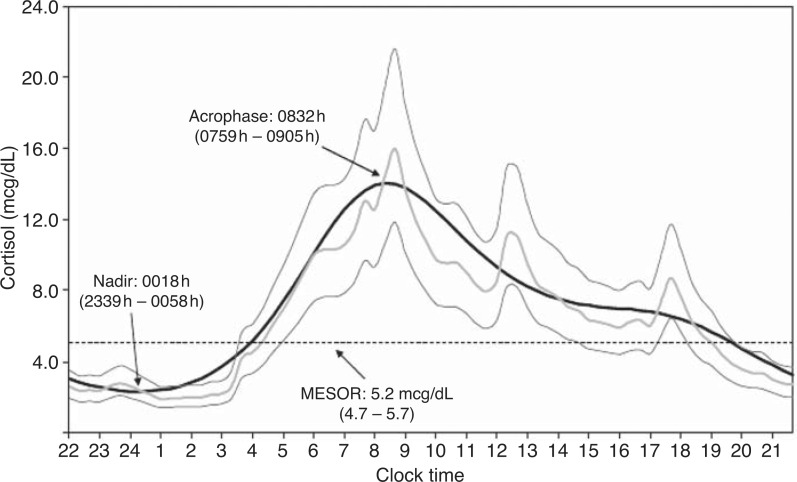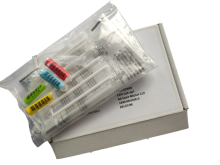Cortisol profile

Abnormally high or low cortisol concentrations in the body can be the cause of different symptoms and are related to different pathologies such as Cushing's syndrome.
Increased cortisol values can be related to the following symptoms
- Weight gain
- Disorder of the menstrual cycle
- Increased blood pressure
- Muscle weakness
- Heart failure
- Disruption of blood sugar regulation
- Bone loss (osteoporosis)
- Weakening of the immune system
Possible consequences of low cortisol values :
- Fatigue / asthenia
- Low blood pressure
- Impaired performance (e.g. cognitive)
- Increased skin pigmentation
- Nausea and vomiting
- Weight loss, loss of appetite
Cortisol levels fluctuate greatly during the day but follow a circadian rhythm. The highest value is reached within 90 minutes of waking up and then decreases to its lowest value around midnight. The graph below shows a normal cortisol cycle:
(Source : Sharon Chan and Miguel Debono, Replication of cortisol circadian rhythm: new advances in hydrocortisone replacement therapy, Ther Adv Endocrinol Metab (2010) 1(3) 129-138)
To assess whether the cortisol cycle is disturbed, a 4 or 5 point profile can be established over a day. The salivary test assesses unbound free cortisol, whereas a blood test also measures protein-bound hormones. The advantage of the saliva test is that it measures only the biologically active fractions (about 1-3% of total circulating cortisol).
The results are given in the analysis report.
For an individual interpretation of the results, please consult your doctor or health care professional.
You can order your kit here (kit shipping charges apply).
You may also need these items

